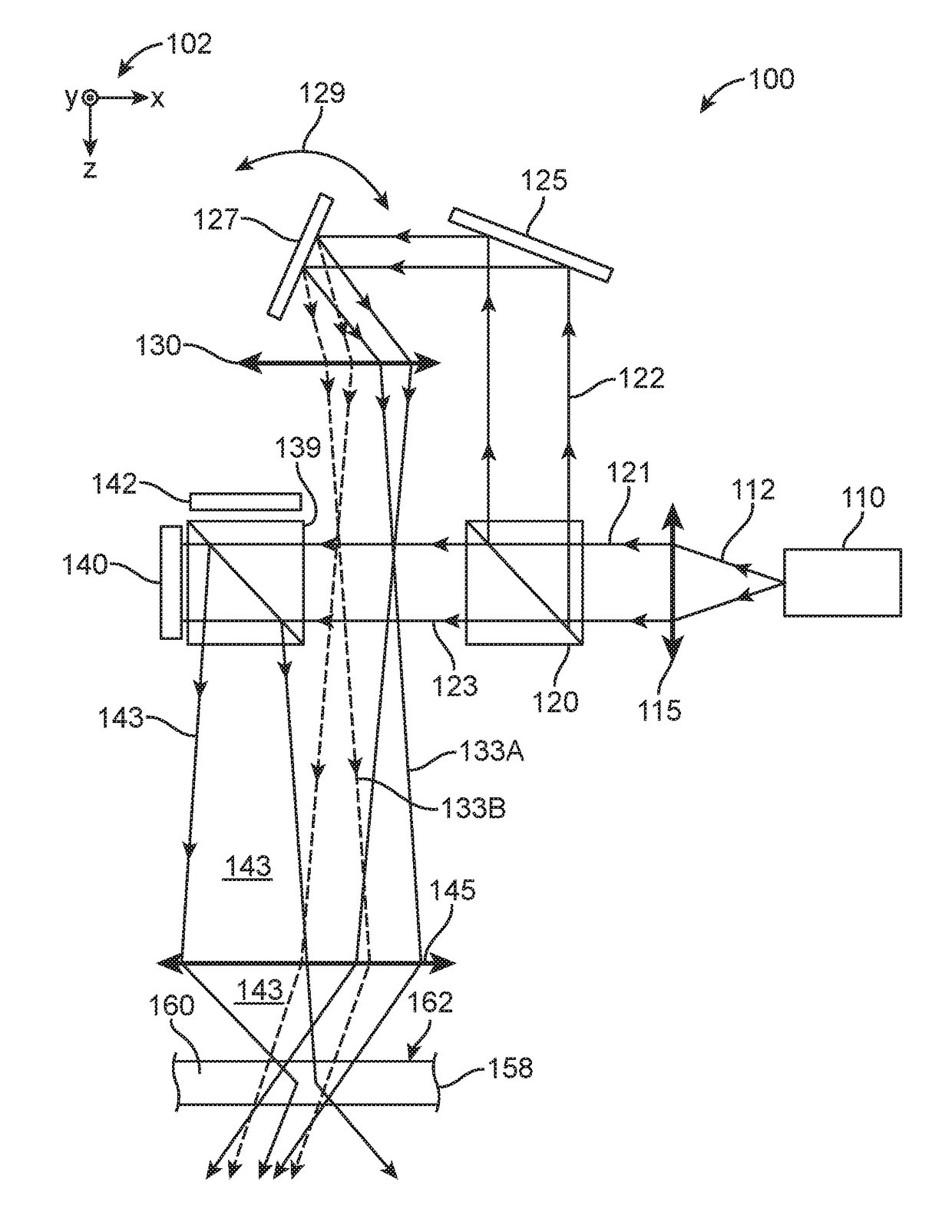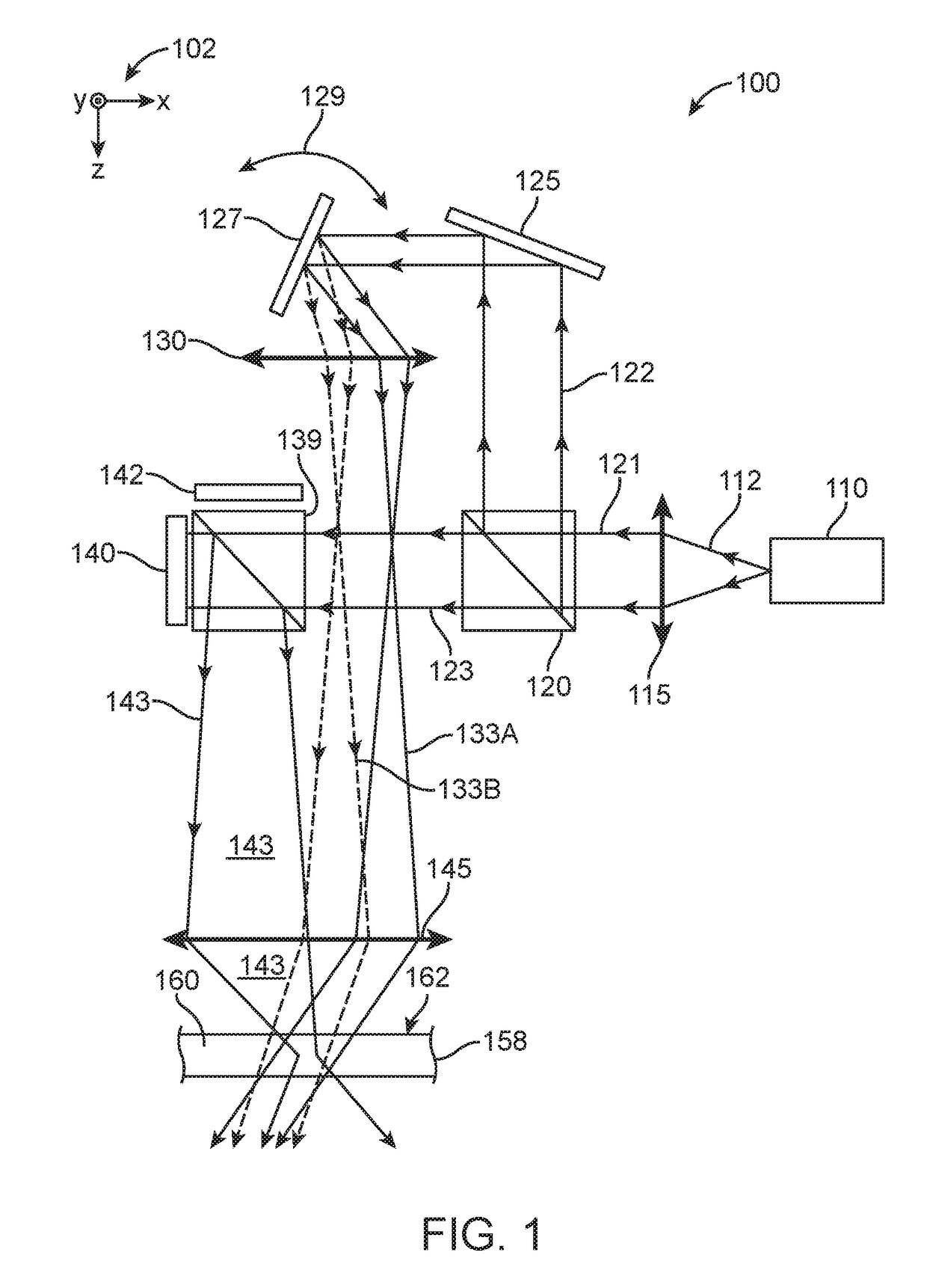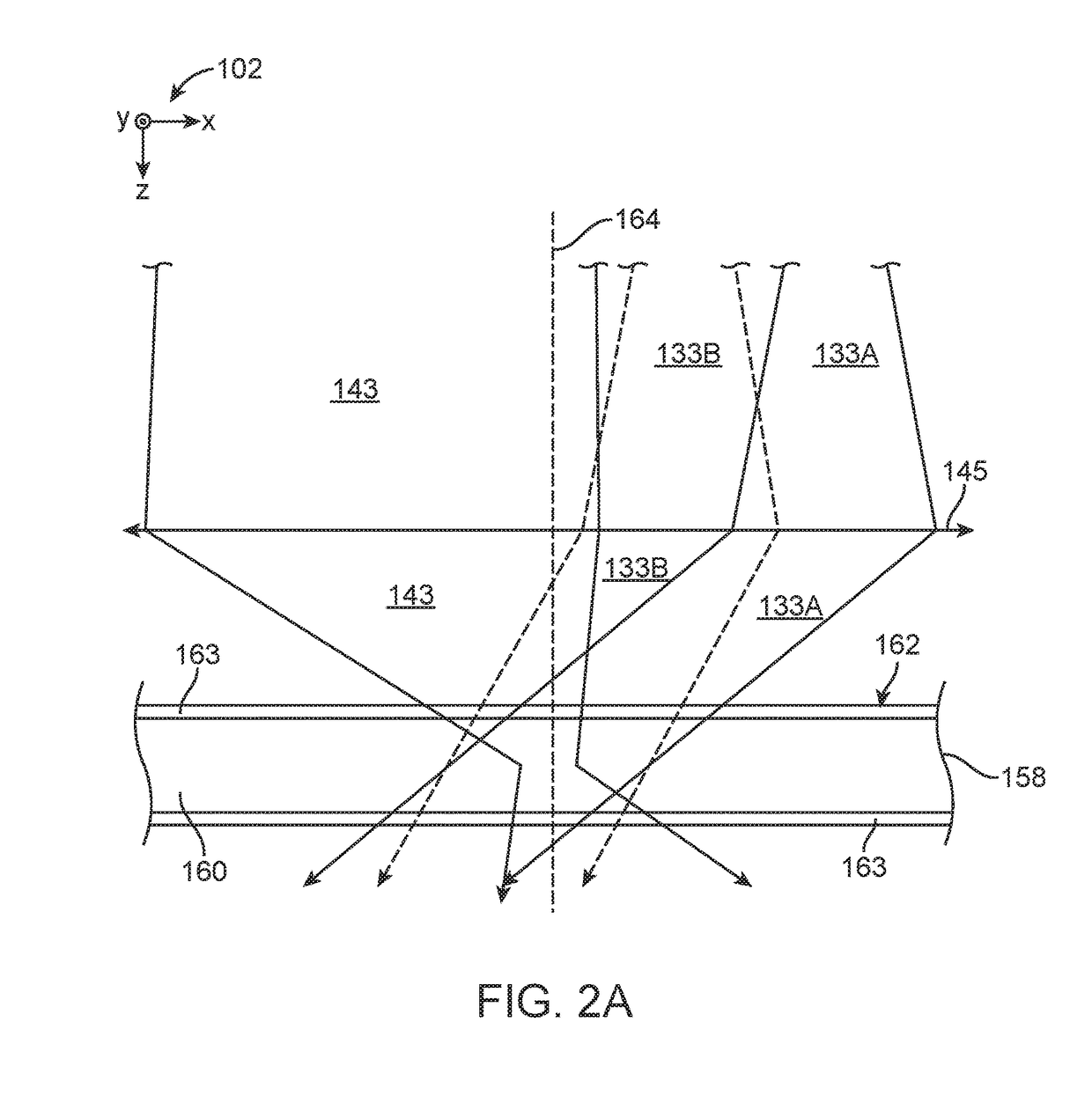Dynamic aperture holography
a dynamic aperture and holography technology, applied in the field of holographic data storage, can solve the problem of limiting the extent to which multilayer techniques can be exploited to increase the density of storage, and achieve the effect of increasing the density of data storag
- Summary
- Abstract
- Description
- Claims
- Application Information
AI Technical Summary
Benefits of technology
Problems solved by technology
Method used
Image
Examples
first embodiment
A First Embodiment Dynamic Aperture Holographic System
[0075]A first embodiment dynamic aperture holographic system 200 is illustrated in FIGS. 3A and 3B. A variation of the first embodiment system 200 is illustrated in FIG. 3C. The first embodiment dynamic aperture holographic system 200 includes monocular architecture, but some other embodiments of dynamic aperture holographic systems do not include monocular architecture. The first embodiment system 200 is configured to readily perform dynamic aperture holography by recording multiple holograms using multiple signal beams, wherein the multiple signal beams have multiple signal beam angular apertures that differ from each other. As shown in FIG. 3A, the first embodiment system 200 comprises light source 210 configured to produce light beam 212, which passes through collimating lens 215 to produce a collimated light beam 221.
[0076]The light source 210 is typically, but not necessarily, an external cavity, single-mode, tunable diode ...
second embodiment
A Second Embodiment Dynamic Aperture Holographic System
[0118]A second embodiment dynamic aperture holographic system 400, illustrated in FIG. 10, includes monocular architecture and is configured to readily perform dynamic aperture holography. The second embodiment system 400 includes an external cavity diode laser 410 configured to produce a coherent light beam 412, which passes through collimating lens 415 to produce a collimated light beam 421. The collimated light beam 421 propagates to mirror galvanometer 427, whereupon it is directed as a reference beam 433 through reference beam converging lens 451. The mirror galvanometer 427 is configured to rotate through a defined range, the rotation being illustrated by rotation arrow 429. The rotation of the mirror galvanometer 427 thus directs the reference beam 433 through the reference beam converging lens 451 at various angles. Reference beam angular aperture is thus adjusted using the mirror galvanometer 427.
[0119]The reference bea...
PUM
 Login to View More
Login to View More Abstract
Description
Claims
Application Information
 Login to View More
Login to View More - R&D
- Intellectual Property
- Life Sciences
- Materials
- Tech Scout
- Unparalleled Data Quality
- Higher Quality Content
- 60% Fewer Hallucinations
Browse by: Latest US Patents, China's latest patents, Technical Efficacy Thesaurus, Application Domain, Technology Topic, Popular Technical Reports.
© 2025 PatSnap. All rights reserved.Legal|Privacy policy|Modern Slavery Act Transparency Statement|Sitemap|About US| Contact US: help@patsnap.com



